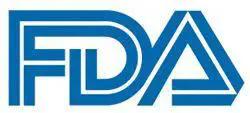News
Article
FDA Approves Nirogacestat for Desmoid Tumors
Author(s):
The FDA has approved nirogacestat (Ogsiveo) for adult patients with progressing desmoid tumors who require systemic treatment.
FDA

The FDA has approved nirogacestat (Ogsiveo) for adult patients with progressing desmoid tumors who require systemic treatment.1,2
The regulatory decision was supported by findings from the phase 3 DeFi trial (NCT03785964) in which nirogacestat resulted in a 71% reduction in the risk of disease progression or death vs placebo in this population. The median progression-free survival (PFS) in the investigative arm was not yet reached (NR; 95% CI. NR-NR) vs 15.1 months (95% CI, 8.4-NR) in the placebo arm (HR, 0.29; 95% CI, 0.15-0.55; P < .0001).
Notably, the PFS data were supported by change from baseline in patient-reported worst pain favoring the nirogacestat arm. Additionally, data from an exploratory analysis of PFS that had been based on radiographic progression only revealed a hazard ratio of 0.31 (95% CI, 0.16-0.62).
Nirogacestat elicited an objective response rate of 41% (95% CI, 29.8%-53.8%) vs 8% (95% CI, 3.1%-17.3%) with placebo (P < .001). Of those who responded to nirogacestat, 7% achieved a complete response and 34% experienced a partial response; in the placebo arm, these rates were 0% and 8%, respectively.
This is the first approved treatment for desmoid tumors, according to the FDA.
“Desmoid tumors can have a significant impact on people’s lives and are difficult to manage due to their invasive nature and high rates of recurrence. [Nirogacestat] is a highly innovative therapy with efficacy data demonstrating both meaningful antitumor activity and a significant improvement in desmoid tumor symptoms,” Mrinal M. Gounder, MD, sarcoma medical oncologist at Memorial Sloan Kettering Cancer Center in New York City, New York, and DeFi investigator stated in a press release.3 “As a treating physician, it was encouraging to see in the DeFi trial that [nirogacestat] achieved statistically significant and clinically meaningful improvements across the primary and all key secondary endpoints, while also having a manageable safety profile. This approval represents an important therapeutic advance for patients.”
About DeFi: Eligibility, Treatment, and Objectives
The international, multicenter, double-blind, placebo-controlled trial enrolled patients with desmoid tumors that had progressed within 1 year of screening.2 Those who had progressing desmoid tumors that would result in immediate risk were excluded.
A total of 142 patients were randomly assigned to receive 150 mg of oral nirogacestat or placebo twice daily. Treatment continued until progressive disease or intolerable toxicity. A key stratification factor was primary tumor location (intra-abdominal vs extra-abdominal). Tumor imaging was done every 3 months. Notably, crossover from placebo to niragacestat was allowed upon radiographic progression.
PFS by RECIST v1.1 and as assessed by blinded independent central review, or on clinical progression by the investigator and confirmed by independent review, served as the trial's primary end point. Clinical progression required worsening of symptoms that led to a global deterioration of health status causing the permanent discontinuation from study treatment and the start of emergent treatment such as radiotherapy, surgery, or systemic therapy including chemotherapy or TKIs.
ORR served as an additional efficacy end point of interest. Worst pain (item 3) was evaluated on a daily basis utilizing the Brief Pain InventoryShort Form (BPI-SF).
Additional Efficacy Data
Additional data published in the New England Journal of Medicine indicated that PFS and ORR improvements were in favor of nirogacestat irrespective of baseline characteristics including sex, tumor location, tumor focality, treatment status, prior therapies received, mutational status, and history of familial adenomatous polyposis.4 The median time to first response with nirogacestat was 5.6 months vs 11.1 months with placebo.
Early and sustained improvements in patient-reported outcomes were also observed with nirogacestat vs placebo; this was true as it relates to pain (P <.001), desmoid tumor–specific symptoms (P < .001), physical/role functioning (P < .001), and overall health-related quality of life (P ≤ .01).
Safety Findings
The toxicity of nirogacestat was examined in 69 patients who were enrolled in DeFi.2 The median duration of exposure to the agent was 20.6 months (range, 0.3-33.6). Twenty percent of patients experienced serious adverse effects (AEs). Dose reductions and interruptions were needed in 41% and 51% of patients, respectively.
Moreover, 20% of patients permanently discontinued nirogacestat due to AEs. AEs that led to discontinuation in at least 2% of patients included diarrhea, ovarian toxicity, increased alanine aminotransferase, and increased aspartate aminotransferase (AST).
The most common any-grade AEs experienced by at least 15% of patients in the nirogacestat and placebo arms, respectively, were diarrhea (84% vs 35%), nausea (54% vs 39%), stomatitis (39% vs 4%), abdominal pain (22% vs 14%), ovarian toxicity (75% vs 0%), rash (68% vs 14%), alopecia (19% vs 1.4%), fatigue (54% vs 38%), headache (30% vs 15%), cough (20% vs 6%), dyspnea (16% vs 6%), upper respiratory tract infection (17% vs 2.8%).
The most common any-grade laboratory abnormalities that worsened from baseline in at least 15% of patients included decreased phosphate (65% vs 11%) and potassium (22% vs 4.2%), and increased urine glucose (51% vs 0%), urine protein (40% vs 25%), AST (33% vs 18%), and ALT (30% vs 21%).
References
- FDA approves nirogacestat for desmoid tumors. FDA. November 27, 2023. Accessed November 27, 2023. https://www.fda.gov/drugs/resources-information-approved-drugs/fda-approves-nirogacestat-desmoid-tumors
- Ogsiveo (nirogacestat). Prescribing information. SpringWorks Therapeutics, Inc. Updated November 2023. Accessed November 27, 2023. https://www.accessdata.fda.gov/drugsatfda_docs/label/2023/217677s000lbl.pdf
- SpringWorks Therapeutics announces FDA approval of Ogsiveo (nirogacestat) as the first and only treatment for adults with desmoid tumors. News release. SpringWorks Therapeutics, Inc. November 27, 2023. Accessed November 27, 2023. https://ir.springworkstx.com/news-releases/news-release-details/springworks-therapeutics-announces-fda-approval-ogsiveotm
- Gounder M, Ratan R, Alcindor T, et al. Nirogacestat, a γ-secretase inhibitor for desmoid tumors. N Engl J Med. 2023;388(10):898-912. doi:10.1056/NEJMoa2210140






.jpg?fit=crop&auto=format)


